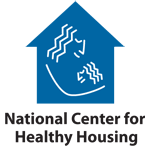Share
Related Topics
Tagged As
The National Air Duct Cleaners Association (NADCA), an association that seeks to establish standards for the HVAC maintenance and restoration industry, is urging professionals and consumers to avoid using chemicals for cleaning and maintaining air duct systems.
We do not strictly control Google ad content. If you believe any Google ad is inappropriate, please email us directly here.
NADCA, recommends the Assessment Cleaning and Restoration (ACR) standard for assessment, cleaning and restoration, promoting "physical source removal" as the best technique for cleaning and decontaminating HVAC systems.
According to NADCA: "The first step in creating a healthy atmosphere is to rid the air of contaminants that contribute to mold, mildew and other microbiological growth...Physical removal of contaminants and debris is the ideal method for cleaning HVAC systems...Source removal is also the safest method because it will decontaminate HVAC systems without the use of chemical products.”
NADCA offers these tips:
- Overuse of antimicrobial products can lead to needless exposure to chemicals. A product without specific HVAC directions should not be used. The entire HVAC system should be cleaned; this includes cleaning the coils, blowers and other components.
- Know the difference between ductwork and HVAC systems. Application of chemicals is only acceptable when the product is legally approved for the application. The Environmental Protection Agency (EPA) has not accepted any disinfectant, sanitizer or fungicidal product for use in the ductwork of HVAC systems. However, the EPA has accepted some of these products for use in other components of the HVAC system, when needed.
- There are risks associated with chemical products; this is why NADCA encourages physical source removal rather than chemical application to HVAC systems. Possible risks associated with chemical products include allergic reactions, chemical burns and respiratory irritation.
HHI Error Correction Policy
HHI is committed to accuracy of content and correcting information that is incomplete or inaccurate. With our broad scope of coverage of healthful indoor environments, and desire to rapidly publish info to benefit the community, mistakes are inevitable. HHI has established an error correction policy to welcome corrections or enhancements to our information. Please help us improve the quality of our content by contacting allen@healthyhouseinstitute.com with corrections or suggestions for improvement. Each contact will receive a respectful reply.
The Healthy House Institute (HHI), a for-profit educational LLC, provides the information on HealthyHouseInstitute.com as a free service to the public. The intent is to disseminate accurate, verified and science-based information on creating healthy home environments.
While an effort is made to ensure the quality of the content and credibility of sources listed on this site, HHI provides no warranty - expressed or implied - and assumes no legal liability for the accuracy, completeness, or usefulness of any information, product or process disclosed on or in conjunction with the site. The views and opinions of the authors or originators expressed herein do not necessarily state or reflect those of HHI: its principals, executives, Board members, advisors or affiliates.
(Note: The views expressed in this blog post are those of the author, and do not necessarily represent those of The Healthy House Institute, LLC.)








